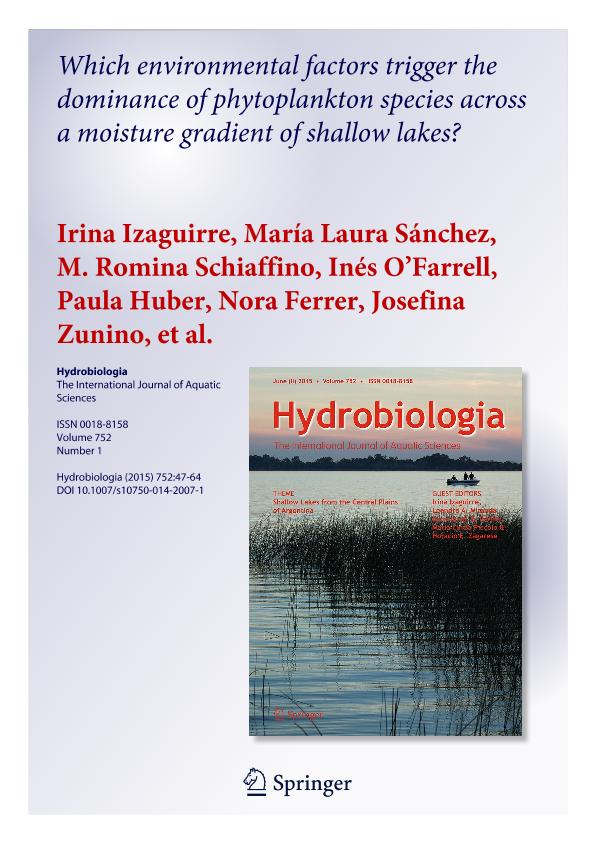Artículo
Which environmental factors trigger the dominance of phytoplankton species across a moisture gradient of shallow lakes?
Izaguirre, Irina ; Sánchez, María Laura
; Sánchez, María Laura ; Schiaffino, María Romina
; Schiaffino, María Romina ; O'farrell, Ines
; O'farrell, Ines ; Huber, Maria Paula
; Huber, Maria Paula ; Ferrer, Nora Cristina; Zunino, Josefina
; Ferrer, Nora Cristina; Zunino, Josefina ; Lagomarsino, Leonardo
; Lagomarsino, Leonardo ; Mancini, Miguel Alberto
; Mancini, Miguel Alberto
 ; Sánchez, María Laura
; Sánchez, María Laura ; Schiaffino, María Romina
; Schiaffino, María Romina ; O'farrell, Ines
; O'farrell, Ines ; Huber, Maria Paula
; Huber, Maria Paula ; Ferrer, Nora Cristina; Zunino, Josefina
; Ferrer, Nora Cristina; Zunino, Josefina ; Lagomarsino, Leonardo
; Lagomarsino, Leonardo ; Mancini, Miguel Alberto
; Mancini, Miguel Alberto
Fecha de publicación:
06/2015
Editorial:
Springer
Revista:
Hydrobiologia
ISSN:
0018-8158
Idioma:
Inglés
Tipo de recurso:
Artículo publicado
Clasificación temática:
Resumen
We investigated nine Pampean shallow lakes (Argentina) across a moisture gradient (mean annual precipitation 1,000–500 mm), under the framework of a network project of lake monitoring whose main objective was to analyse the responses of ecosystems to different stressors associated with human activities. We postulate that species bloom in different shallow lakes will be determined mainly by local optical features, nutrients and salinity. We analysed the phytoplankton structure during the warm season 2012–2013, identifying those species and functional groups that proliferate in the lakes. Most lakes showed high phytoplankton biomass, except a saline lake located in the driest part of the gradient and an inorganic turbid lake. In some lakes, cyanobacteria blooms occurred in summer, persisting until autumn. Small colonial cyanobacteria and small fast-growing chlorophytes were abundant in most turbid enriched and anthropogenically impacted systems. Lowest species and functional diversity occurred in the saline lake. Multivariate analysis indicated that the phytoplankton structure was mainly defined by conductivity, transparency and variables associated with the trophic state, also reflecting the importance of the geographical location. Our results evidenced the vulnerability of most shallow lakes in the region to water level fluctuations, eutrophication and canalization.
Archivos asociados
Licencia
Identificadores
Colecciones
Articulos(IEGEBA)
Articulos de INSTITUTO DE ECOLOGIA, GENETICA Y EVOLUCION DE BS. AS
Articulos de INSTITUTO DE ECOLOGIA, GENETICA Y EVOLUCION DE BS. AS
Citación
Izaguirre, Irina; Sánchez, María Laura; Schiaffino, María Romina; O'farrell, Ines; Huber, Maria Paula; et al.; Which environmental factors trigger the dominance of phytoplankton species across a moisture gradient of shallow lakes?; Springer; Hydrobiologia; 752; 1; 6-2015; 47-64
Compartir
Altmétricas



